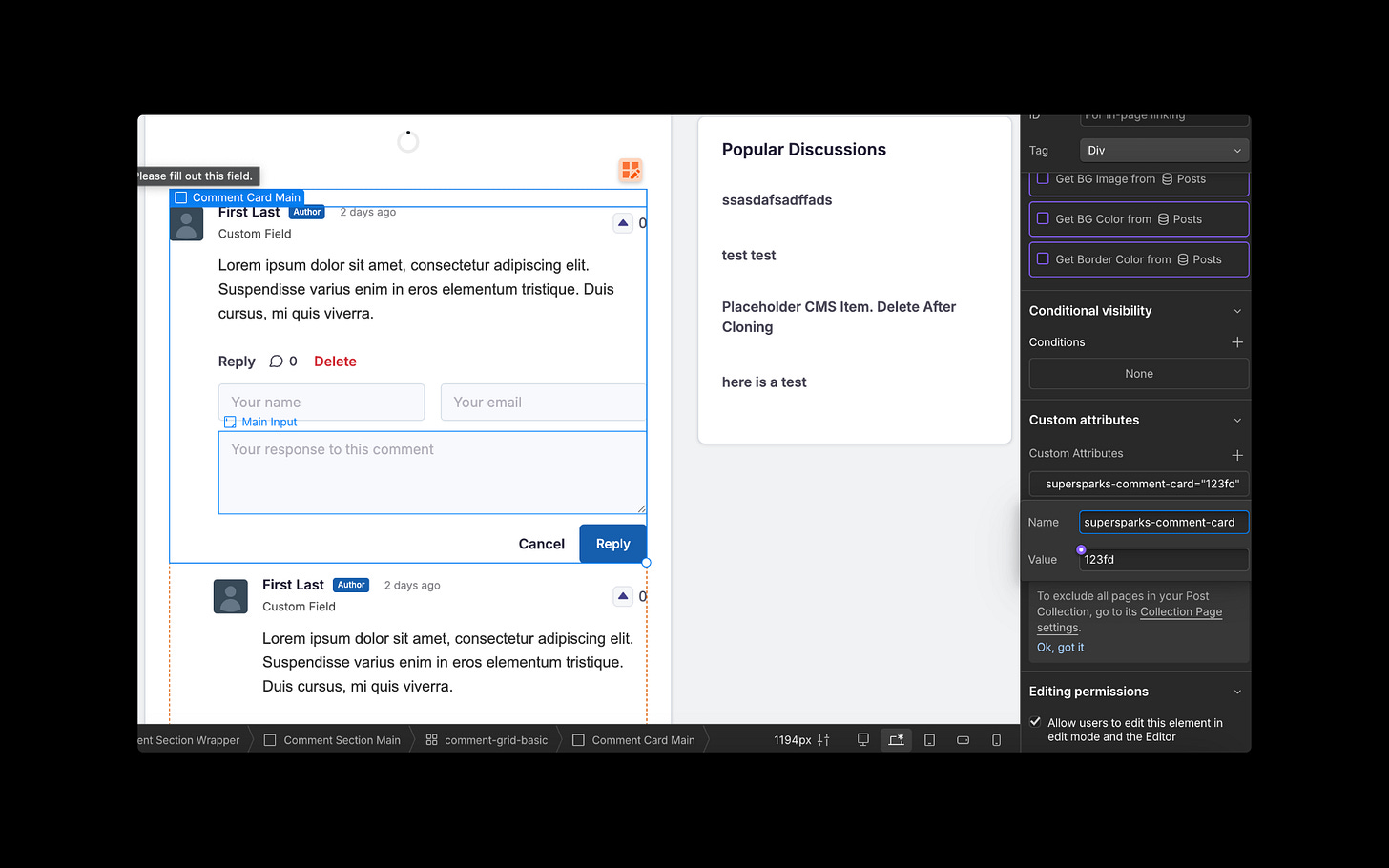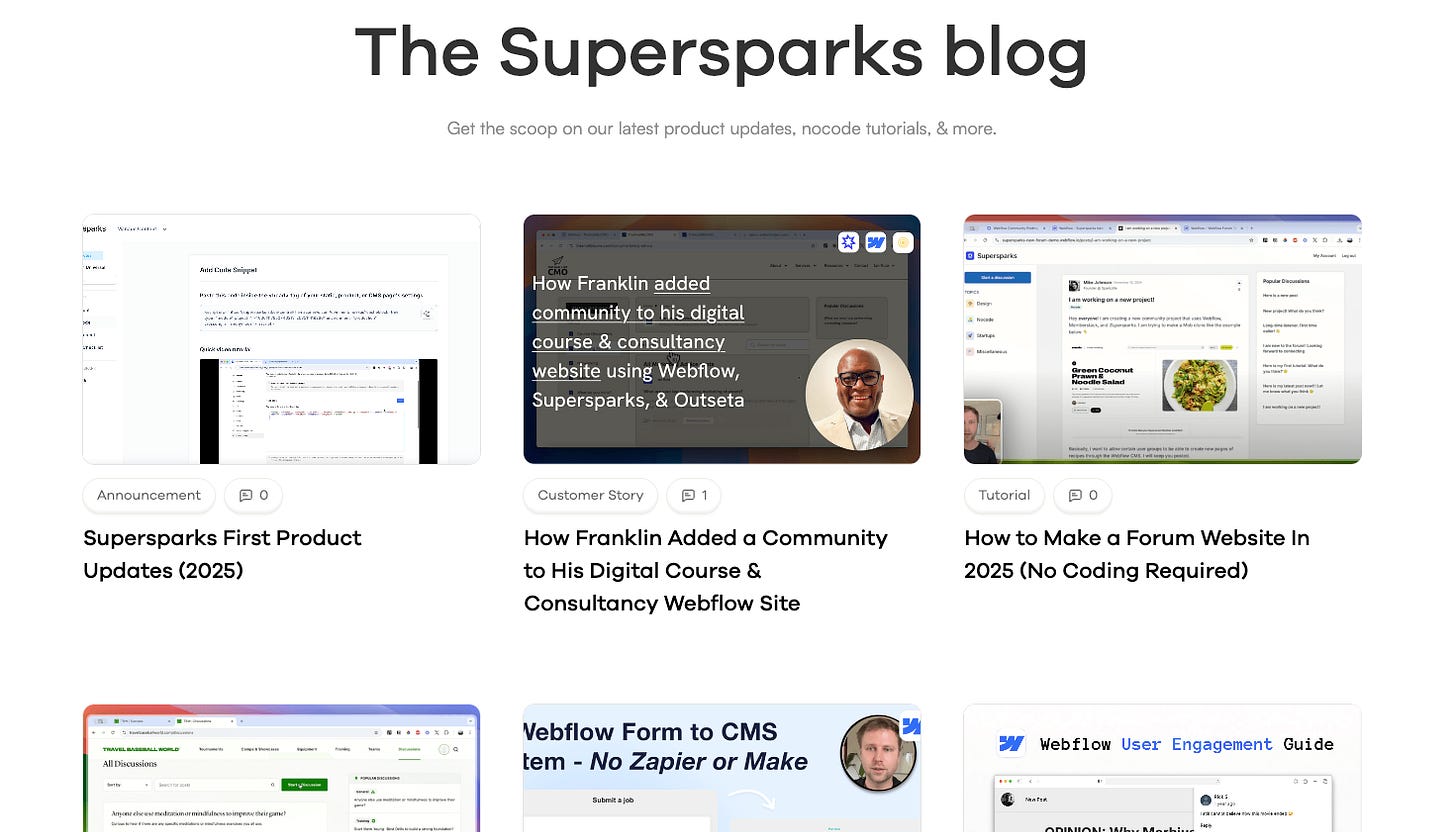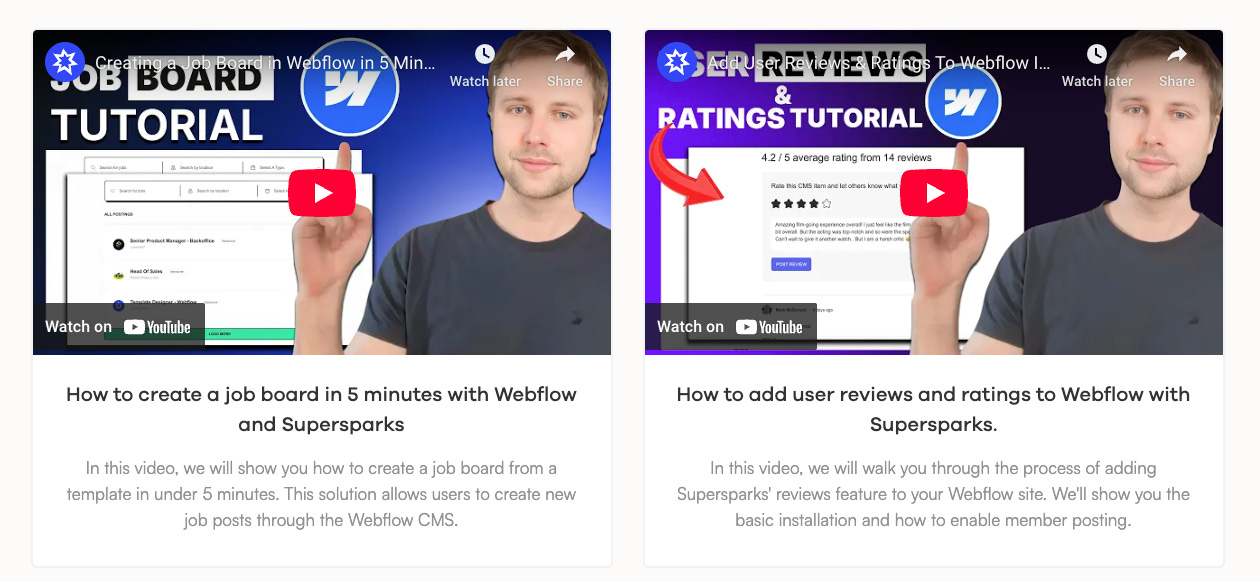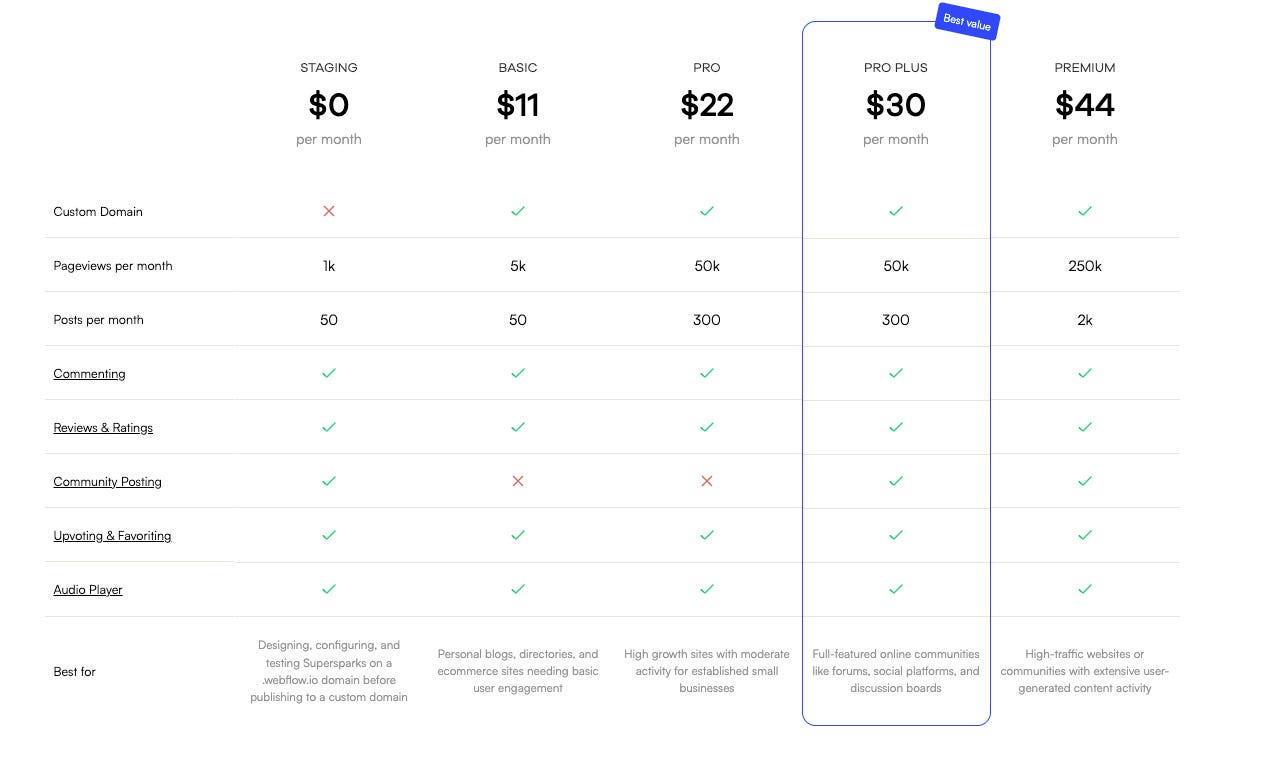His No-Code Solution Has 200 Paid Users
How this Product Manager built a software business with No-Code tools
🎉🎉🎉 Want to reach 35,000 readers every month for just $66? Find out more here.
Hello! Can you introduce yourself and tell us about your business?
My name is Ian and I'm a Product Manager and no-code builder based in Vancouver, Canada.
My business is Supersparks, a tool that enables Webflow users to add fully customizable community features to their websites in minutes.
Supersparks solves a major pain point for Webflow users by allowing them to add user-generated content like comments, reviews & ratings, upvoting, and community posting directly on their Webflow sites without compromising on design control.
Unlike generic embedded widgets that don't match your site's design, Supersparks lets you design everything right in the Webflow Designer so it looks and feels like a natural part of your site. Through these features, our tool unlocks the following use cases for Webflow sites: forums, blog commenting, social media platforms, job boards, directory & product reviews, and much more Supersparks seamlessly integrates with Memberstack and Outseta, which arecommonly used membership tools with Webflow sites, so when a user is logged in through either tool and posts content through ours, profile details (eg. name, avatar, etc) gets automatically displayed with their content.
This is especially valuable for creators looking to monetize their audience through community features, as both Outseta and Memberstack offer powerful payment features.
How did you start this business? Take us through the process.
My journey into no-code began in 2020 after discovering Makerpad's Ben Tossell on the Indie Hackers podcast.
At the time, I was on the founding team of a venture-backed startup with limited development resources where I leveraged Nocode to help build MVPs fast for multiple product initiatives.
The idea for Supersparks actually came from a personal need. A couple years ago, I built a brewery directory site using Webflow, Airtable, and Whalesync after learning about programmatic SEO on Twitter.
My vision went beyond a simple directory - I wanted to create a Letterboxd/Goodreads-style community where beer enthusiasts could review breweries and connect with each other. However, I couldn't find any tool that offered custom design within Webflow Designer (not generic embedded widgets), integrated with membership tools like Memberstack, and wouldn't consume my precious CMS items.
When I couldn't find a solution meeting these requirements, I decided to build my own. After creating a landing page and sharing my idea with a few online communities, I discovered many other Webflow users faced the same challenge.
This validation gave me the confidence to start building Supersparks.
How did you get your first initial customers?
For our initial customer acquisition, I focused heavily on community marketing - sharing our solution directly where our target users already were.
I started by posting about Supersparks on the Webflow forum and relevant subreddits, Facebook groups, and LinkedIn groups where Webflow users gathered. This direct approach allowed me to connect with people who already understood the problem we were solving.
I also invested time in creating SEO-optimized blog posts and landing pages for different use cases of our product. This helped us capture people searching for specific solutions like "add comments to Webflow" or "Webflow community features".
YouTube tutorials demonstrating how to use Supersparks for different scenarios proved especially effective at converting visitors who wanted to see the product in action before committing.
Building in public on Twitter has also been great for top-of-funnel awareness.
Getting listed in Webflow's app marketplace provided significant credibility and a steady stream of interested users who discovered us while looking for ways to extend their Webflow sites.
Since launch, what are your marketing strategies or channels to get new customers?
Our marketing strategy continues to focus on channels where Webflow users naturally congregate.
We've found success with a multi-channel approach:
Community marketing remains our foundation
actively participating in Webflow forums, relevant subreddits
Facebook groups, and LinkedIn groups where we can provide genuine help rather than just promoting our product.
We're constantly expanding our SEO efforts with targeted blog posts and landing pages for specific use cases of our product. This helps us capture highly qualified traffic from people searching for the exact problems we solve.
Our YouTube channel has become a valuable asset, with tutorials for different use cases of Supersparks. These videos serve both organic marketing and educational content for how to implement our product for different use cases. Twitter continues to be great for top-of-funnel awareness and connecting with the broader no-code community. Webflow's app marketplace remains an important discovery channel for us.
This approach has helped us grow consistently to: 2,000 registered users 200 paid customers 2,500 visitors a month to our site 500 social media followers on Twitter.
.
How does your business make money?
Our business model is entirely subscription-based.
We've designed it to give users as much time as they need to test and implement our tool before committing to a paid plan. Supersparks is free to use on staging domains for Webflow, allowing users to design and test everything before going live.
Our tool only requires a paid subscription when used on a custom domain. We also offer a free trial period for using the tool on custom domains. One of our biggest conversion drivers are the emails we send when users' free trials are about to expire. Our pricing tiers are based on monthly usage - specifically the number of pageviews and amount of content posted.
Our community posting feature (which allows users to create new pages of content) is exclusive to our higher pricing tier. This model has proven effective for us, as it allows users to get comfortable with the product before making a financial commitment, and then scales with their success.
While I prefer not to share exact revenue figures, I can say that with our 200 paid customers, Supersparks has reached a sustainable point where it's ramen profitable, covering its operating costs, allowing for investments for development and growth.
The hybrid approach we've taken with our technology stack has been crucial in keeping our costs manageable.
By starting with Bubble for the backend and web app, then strategically transitioning parts to custom code as we scaled, we've avoided the massive upfront investment typically required for an ambitious product like ours. This approach was particularly important after Bubble's recent pricing changes, which would have significantly increased our costs due to our high traffic volumes (our app is loaded millions of times a month across hundreds of sites).
The decision to rebuild our backend with custom code while keeping the web app portion (installation flows, settings management, content moderation dashboard) in Bubble has given us the best of both worlds - scalable performance where needed and the ability to rapidly iterate on features.
Where can we go to learn more about you and your business?
You can find more information at the following links:







